Biographical Notes reCharles A. (Chuck) StonePage 1 of 2 Pages, of Chapter 14,A FINAL FLING |
||||||||||||||
| During the past few years of the 1980’s I had watched the magic that could be worked with computers with growing interest. From what I could see, with my inherent interest in graphics and display materials, the Macintosh breed of equipment suited my interests more than the PCs that seemed to be taking over the world. On occasional visits to St. Cloud, I had developed a friendship with Jim McAlister, then a most knowledgeable salesman and technician with a computer company that specialized in Apple products. Their primary interest was working with schools in a multi-state area, but they were also dealing with businesses and individuals, as called for. During my final winter months at the Historic Site, I was using my free time to reorganize my home shop to add a computer-related equipment work room. With the passing years, my ability to move heavy cabinetry and bulky projects around in the shop and then out to their destination for installation, was increasingly limited. Throughout our time in Little Falls, my interests were gradually evolving, based upon changing events, technology and our own varied accumulating experiences. In my meetings with other historic site managers, operators of county and community historical societies and museums, it seemed to me there was a market for a publication (guide book) that would help these typically underfunded organizations to pull themselves up by their boot-straps through guided self-help exhibit and program development projects. I had envisioned the writing of just such a guide, based upon my own experience. Since retiring from the USAF, way back to Flagstaff days, we had operated under the business name of CHARNELL (combining Nell’s and my first names). This name had been suggested to us back in Springfield, Virginia, by a neighbor that had a good insight into our behavior and interests. We used that name and it stuck. Don’t look for it on the Stock Exchange listings though. If I have learned anything in life, it is the fact that, although I am attracted to sometimes unique and interesting kinds of work, and I do love to work, unless I am working for someone else at a salary, I just don’t know, and have never known, how to really make money. With that in mind, here we go on yet a new venture, striving to convert dreams into reality. |
||||||||||||||
| February and March, 1990, found us shaping up the shop. April found us visiting Jim down at Computers of St. Cloud, selecting a Macintosh SE-30 computer, an Apple Scanner and Laser Printer, and companion software to meet our needs. About $12,000.00 later, we were getting hooked up in the shop, with Jim’s help.As soon as we had learned to turn it on, I strived to continue to learn by beginning to write my self-help guide book. Somewhere along the way, we named it “CHARNELL’S Guide to Affordable Exhibits and Programs”. By the fall season, we were putting on the finishing touches to the document. In the meantime we learned to speak QuarkXpress, Photoshop, and other kinds of computer speak. At the same time we purchased a hot-mounting and laminating vacuum press and supplies that would permit us to mount and laminate exhibit materials up to 34 x 44 inches in size. Putting my ideas on paper required refining and defining the content, process and focus of the various issues involved. For better or worse, I chose to produce it through a local printing plant and added final chapters that would provide guidance as to how our users could use CHARNELL to assist them by providing low-cost exhibit services as they might find it necessary to contract out. Our Table of Contents included chapters on: 1) Exhibit & Program Development Resource References. 2) Grant Writing and Grant Getting. 3) Program Planning Guidelines. 4) Exhibit Planning and Fabrication Guidelines. |
||||||||||||||
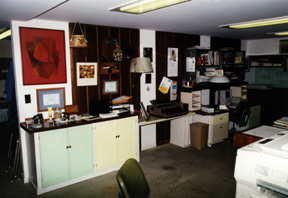 |
||||||||||||||
|
|
||||||||||||||
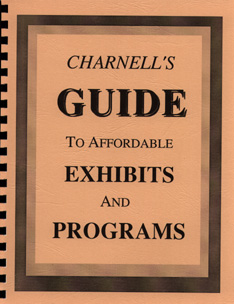 |
||||||||||||||
|
|
||||||||||||||
| 5) Type Selection. 6) Picture Framing and Display [this was a redo of my Flagstaff framing publication] 7) Collage Mural Displays. 8) Description of Services. 9) Program and Exhibit Plan Documentation 10) CHARNELL Order Processing. With the help of a printer friend, we ran off a few hundred copies, mailed out notices promoting the publication to various state and national historical organizations, museums, parks, etc. Over time we sold a few hundred copies of the publication. We mailed books as far east as Puerto Rico and as far west as Guam. In spite of this it never really did catch on and it did not create a viable mail-order clientele for us to do exhibit fabrication business with through the mail. Life was not just work, work, work. In the summer of 1990, David and Cheryl, with their children Allen and April, visited and we had a chance to share some of Minnesota with them. |
||||||||||||||
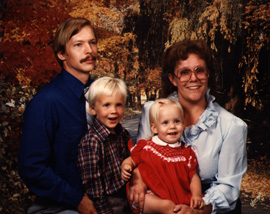 |
||||||||||||||
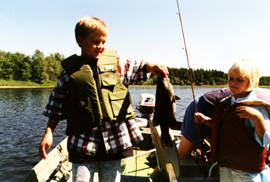 |
||||||||||||||
|
Christmas 1983 |
||||||||||||||
|
float fishing trip down the Mississippi River, Summer 1990 |
||||||||||||||
| In the meantime, we began getting projects that kind of dropped in out of the blue. We were asked to do an exhibit relating to the 100 year history of the local Franciscan Sisters order. Soon after we were doing the 100 year history of the local Hospital, established originally be the Franciscan Sisters. Then we did the 100 year history of the Franciscan Nursing Home, St. Otto’s Care Center. This was followed by the 100 year history of the Breckinridge Hospital, established by the Franciscans about the same time as the Little Falls Hospital.Then came the Breckinridge Nursing Home history. |
||||||||||||||
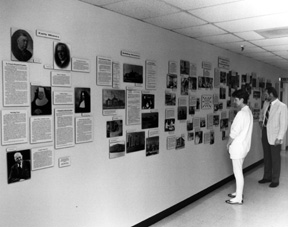 |
||||||||||||||
|
|
||||||||||||||
| Somewhere along here we took on a project to create an exhibit for Mystery Cave, a facility of the Minnesota Dept. of Natural Resources in Southern Minnesota. Work of various kinds kept turning up and there was never a lack of things to do. The Guide to Affordable Exhibits became a tax writeoff and something that I enjoy giving left over copies to our worthy clients who might find a benefit. |
||||||||||||||
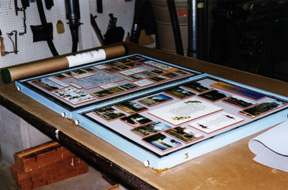 |
||||||||||||||
| It was interesting to see that our Chapter on Grant Writing and Grant Getting had developed a life of its own. I know it has been the foundation of some successful grant getting projects around the country. We were hired by the local Central Minnesota Initiative Foundation to publish a special issue, under their name, for distribution to their clients in a 14 county Central Minnesota area. Over time, we had developed an interesting and productive relationship with the Initiative Foundation. We helped them develop a variety of lectures and display materials used in their training programs and projects to facilitate their mission. I soon found myself building exhibits for the local Chamber of Commerce, Hands of Hope organization, and other groups, most often the non-profit, public service, organizations, that found us to be an effective, responsible and affordable resource. Although my dream of publishing a meaningful self-help guide book seem to have flopped, our overall initiative to do this sort of thing has just kept on rolling along. |
||||||||||||||
|
|
||||||||||||||
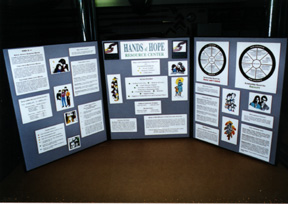 |
||||||||||||||
| This single-sided, three-panel display permits the Hands of Hope organization to conduct meetings or participate in wider gatherings with the help of this portable training aid. |
||||||||||||||
|
End of Page 1 of 2 Pages, Chapter 14 — Go to Page 2 Click below to select a destination Go to Page 1 — 2, this Chapter Chapters 1 — 2 — 3 — 4 — 5 — 6 — 7 — 8 — 9 — 10 |
||||||||||||||